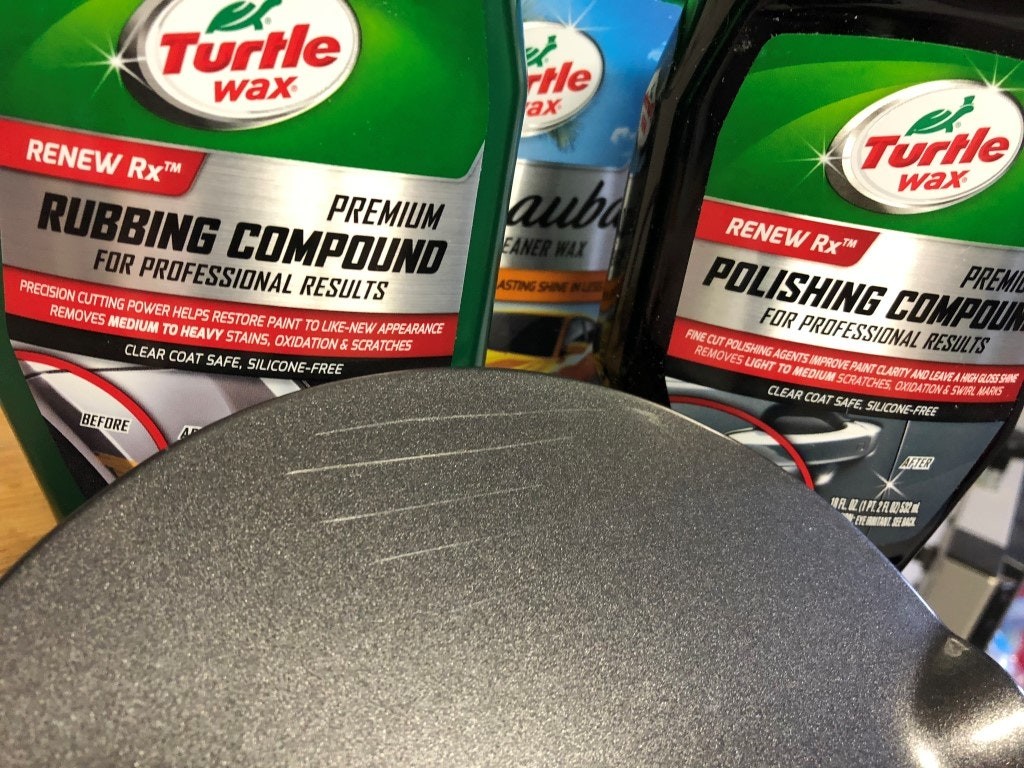Dealing with car scuffs is an unfortunate part of vehicle ownership. Whether it’s a minor brush against a bush or a more noticeable scrape in a parking lot, these blemishes can detract from your car’s appearance. While serious damage may require professional bodywork, many car scuffs can be effectively repaired at home using the right techniques and products. This guide will walk you through understanding car scuffs and the best DIY methods for Car Scuff Repair, drawing insights from product tests to help you choose the best approach for your needs.
Understanding Car Scuffs and Scratches
Before diving into car scuff repair, it’s important to understand the nature of these imperfections. Car paint typically consists of several layers: clear coat, base coat (color), primer, and the metal body. Scuffs and scratches vary in depth, and the repair method depends on which layers are affected.
- Clear Coat Scuffs: These are the most superficial and often appear as hazy or light scratches on the surface. They usually only affect the clear coat layer and can often be removed with polishing compounds.
- Deeper Scratches: These penetrate the clear coat and may reach the base coat. They are more visible and may require more abrasive methods like sanding, followed by polishing.
- Deep Gouges: These are the most severe, going through multiple layers of paint, potentially exposing the primer or even bare metal. Repairing these might involve filling, sanding, and repainting, sometimes best left to professionals.
DIY Car Scuff Repair Methods and Product Reviews
To effectively tackle car scuff repair at home, several products and methods are available. We’ve tested a range of solutions to evaluate their effectiveness on different levels of scuffs and scratches.
Light Scuff Repair with Polishing Compounds
For minor clear coat scuffs, polishing compounds are your first line of defense. These products work by gently abrading the clear coat to level out minor imperfections and restore shine.
We started with Turtle Wax products, including Rubbing Compound, Polishing Compound, Scratch & Swirl Remover, and Carnauba Liquid Wax. Applied by hand, this suite of products aimed to address light surface scratches.
While the Turtle Wax products did a passable job at diminishing the appearance of very light scratches from a distance, closer inspection and various lighting conditions revealed that even minor scratches remained noticeable. Rating: 4/10
For a step up in performance, we tested Meguiar’s Ultimate Compound, Polish, and Liquid Wax, also applied manually.
The Meguiar’s products showed marginally better results than Turtle Wax, but the improvement was minimal. As advised by experts, for more effective scratch removal, machine application becomes necessary.
Enhancing Scuff Repair with Machine Polishers
To boost the effectiveness of polishing, we utilized the Meguiar’s DA Power System, a rotary polishing system that attaches to a standard drill. This tool provides an orbital motion for more consistent and effective polishing action.
Using the DA Power System significantly improved the results. Lighter scuffs became virtually invisible, showcasing the power of machine polishing. However, moderate and deeper scratches still persisted, indicating the need for a more aggressive approach for tougher car scuff repair. Rating: 5/10 without power system, 6/10 with power system.
Deeper Car Scuff Repair with Sanding and Kits
For moderate to deeper car scuffs that polishing alone cannot fix, sanding becomes a necessary step. Sanding levels the clear coat around the scratch, allowing for a smoother, less visible repair.
The 3M Trizact Precision Scratch Kit offers an all-in-one solution for light and medium car scuff repair, incorporating sanding into a three-step process. This kit includes sandpaper for hand sanding, along with drill attachments for applying rubbing compound and polish.
The process begins with wet sanding the scratched area. Initially, sanding can seem alarming as it dulls the clear coat, creating a hazy matte finish. However, this is a necessary step to effectively level the scratch. The 3M Trizact sandpaper proved to be highly effective at diminishing moderate scratches.
Following sanding, buffing with the rubbing compound and then polish using the drill attachments restores the shine. The 3M system effectively eliminated light scratches and made moderate ones significantly less visible. Even deeper scratches showed improvement, though they remained somewhat noticeable.
A minor drawback of the 3M kit is the limited quantity and resealability of the rubbing compound and polish packets, and the small size of the sandpaper squares. While the drill pads are reusable, the consumables are somewhat limited. Rating: 7/10
Choosing the Right Car Scuff Repair Method
Selecting the appropriate car scuff repair method depends on the severity of the damage.
- For very light surface scuffs: Polishing compounds applied by hand may suffice.
- For light to moderate scuffs: Machine polishing with a DA polisher will yield significantly better results.
- For moderate to deeper scratches: A sanding kit like the 3M Trizact system is necessary to effectively level the clear coat and reduce the visibility of the scuff.
- For deep gouges or damage penetrating multiple layers: Professional body shop services are often recommended to ensure a proper and lasting repair.
Conclusion
Car scuff repair doesn’t have to be a daunting task. By understanding the type of scuff you’re dealing with and utilizing the appropriate products and techniques, you can effectively restore your car’s finish at home. For light scuffs, polishing compounds offer a simple solution. For more significant blemishes, machine polishers and sanding kits like the 3M Trizact system provide more robust repair capabilities. Remember to always start with the least abrasive method and progressively increase aggressiveness as needed, and consider professional help for deep or complex damage. With the right approach, you can keep your car looking its best and confidently tackle those annoying car scuffs.
